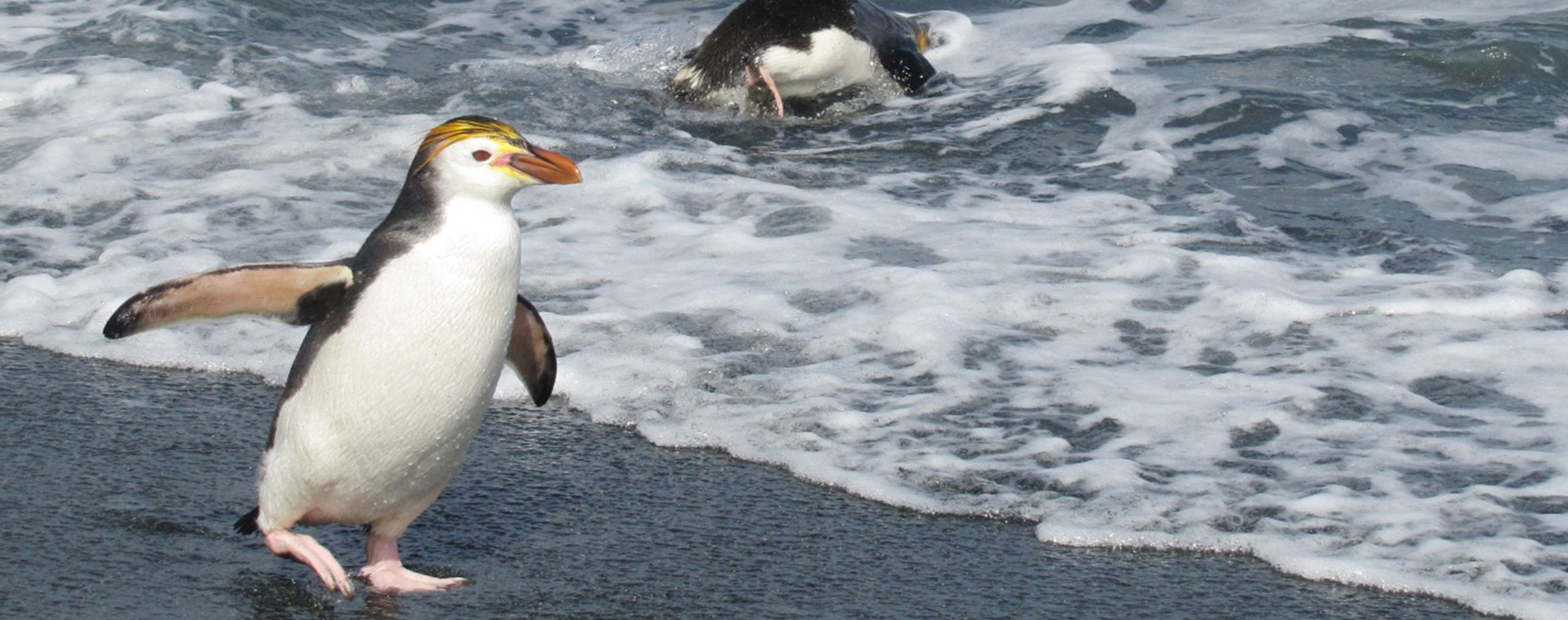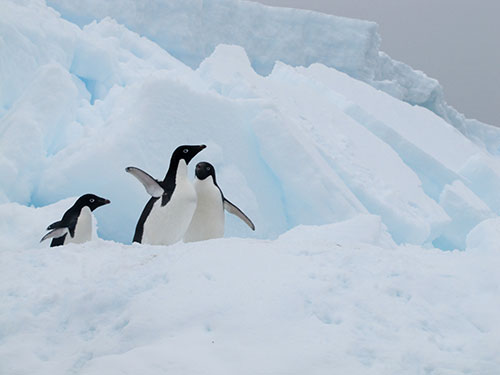
Wildlife in Antarctica

Photogenic, inquisitive, comical — and impeccably dressed — penguins are the most recognizable and charming of all the animals of the Antarctic region. Rarely scared of man, their range of interpersonal skills is amazing: quite apart from their raucous chatter, they also communicate with each other by bobbing their heads, waving flippers, preening and grooming. They are not at all able to sneak up on you –you can hear them approach by the click click click of their toenails on the ice….
And there is nothing quite like the smell of damp feathers…..
Penguins are the most common birds in the Antarctic and are specially adapted for its cold environment. As the sea ice breaks up each spring numerous penguins, seals, and seabirds make their way to a few available landing sites for breeding and to nest on the rocky shores of the Antarctic Peninsula. (and Cape Denison). Only four of The 17 species of penguins, breed on the Antarctic continent itself: the Adelie, the Emperor, the Chinstrap and the Gentoo penguins.
Penguins and seals have a compact body shape and thick skin to help keep in their body heat. Many penguins also have thick layers of fat for insulation (just like whales). Their bones are solid and heavy, and very strong wing muscles and can paddle up to 25 mph. When underwater, emperor penguins are really fast, up to 60 km/h. Impressive and elegant in the water, by contrast, penguins awkwardly waddle and hop once ashore, and sometimes even toboggan (tummy-slide!)
Penguins generally breed in large, dense colonies called ‘rookeries’, some with 180,000 or more birds. Most penguins build nests of stone and there they incubate one or two eggs. Penguins mate only once a year, and it lasts less than 10 seconds.
Penguins avoid predators like Orca whales and leopard seals by leaping clear of the water every few feet — an action called ‘porpoising‘. Antarctic penguins have also developed the ability to leap out of the water to a substantial height on land, enabling them to quickly reach the safety of raised ice edges or rock ledges.
The millions of penguins fight a day to day battle with gulls, sea leopards and killer whales to survive, but are ignorant of the most ferocious predator of them all. They walk up to humans in curiosity and interest. Healthy adult penguins have no predators on land, so they have no natural fear of humans.
Krill are almost entirely responsible, directly or indirectly, for feeding the Antarctic’s millions of penguins, millions of seals, and thousands of whales. In addition to krill, penguins feed heavily on fish, squid, and other small crustaceans.
